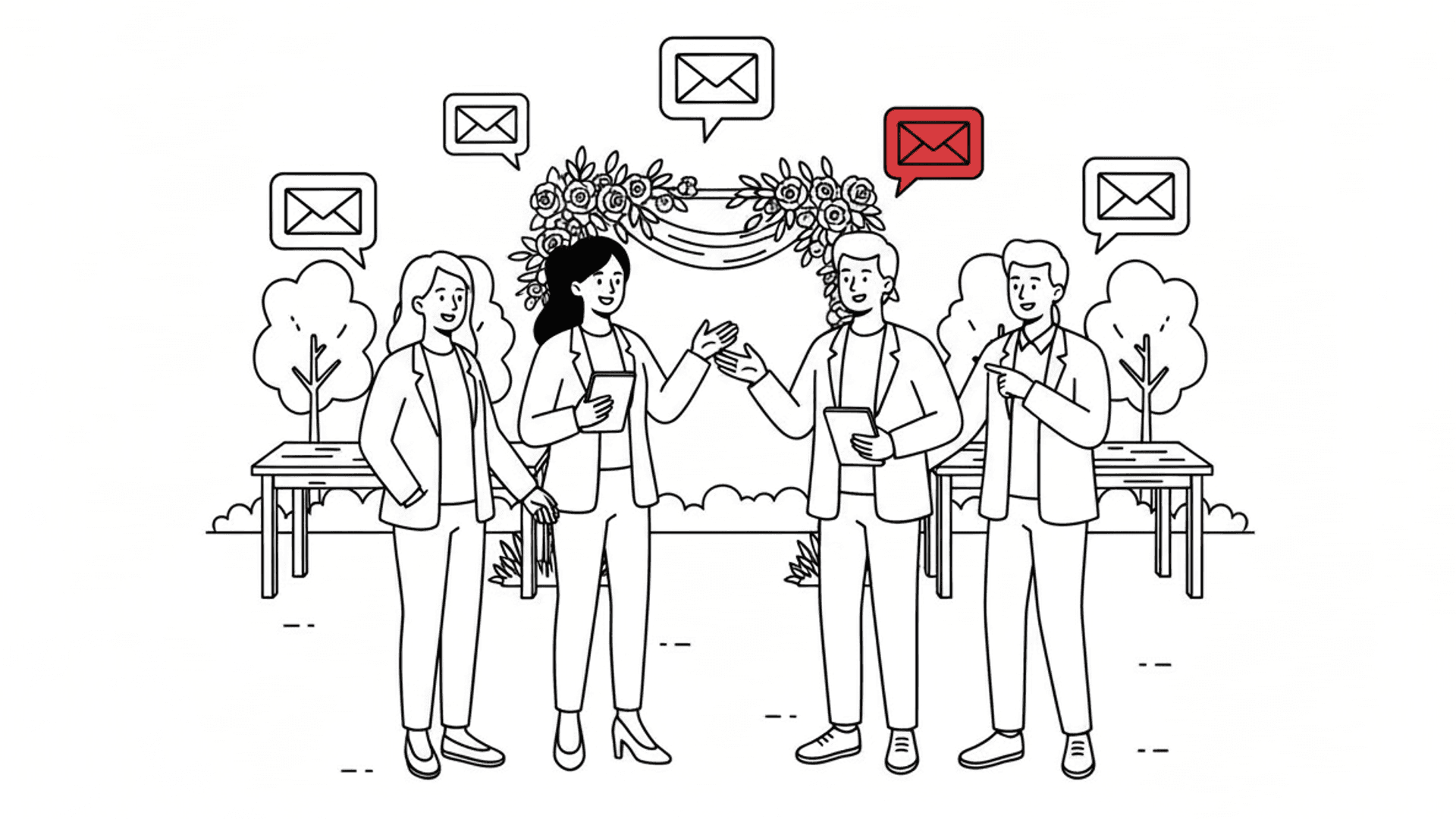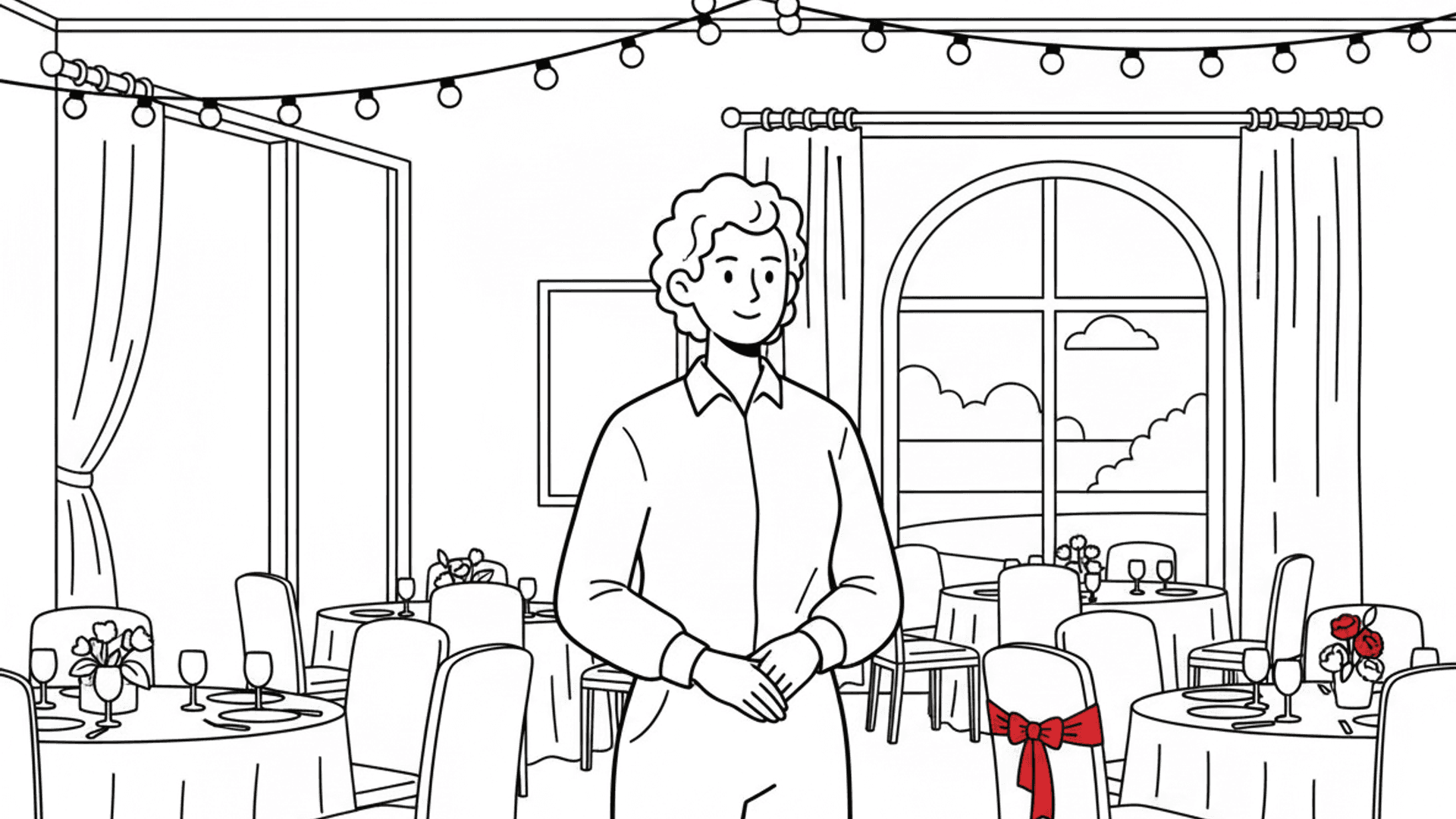Wedding Venue Seasonal Marketing: Peak vs Off-Season
Most venues lose 23-47% of off-season leads to slow response times. Here's how to convert inquiries year-round without adding headcount.
TL;DR: What You'll Learn
- Up to 85% of couples whose calls go unanswered won't call back - a critical problem during slower months when every lead counts
- Responding within 5 minutes makes you 21x more likely to qualify a lead versus waiting 30 minutes, giving smaller venues a competitive edge in off-season
- Peak season call volume often means 21-27% of inquiries are missed; off-season requires persistent follow-up (6+ attempts achieve 93% contact rates)
- Automating first-response and follow-up cadences can increase conversion by 128% while freeing venue teams to focus on tours and closing
Why Peak Season Success Hides Your Lead Response Problem
Four calls in 20 minutes. Two to voicemail. One on hold for 45 seconds before they hang up. One answered while juggling a 200-guest reception.
That's Saturday in June at most wedding venues.
When your calendar's booked three months out and inquiries keep coming, you don't notice the ones slipping away. But here's the math: those missed calls aren't just inconvenient—they're expensive.
The Hidden Cost of Missed Calls During Wedding Season
Most businesses miss 21-27% of inbound calls. Wedding venues during peak season? Probably higher.
Most couples won't call back if you don't answer. They move to the next venue.
In peak season, this feels fine. Your calendar's full anyway.
But run the off-season math: 100 monthly inquiries × 25% missed × $10,000 average booking = $250,000 annually going to venues that answer faster. That's not "busy season overflow"—that's leaving a quarter-million on the table.
Why Voicemail Doesn't Work
Most callers don't leave voicemails. Your callback list shows 5 messages. Reality? You missed 20+ calls.
Peak season, you don't notice. Bookings keep coming.
Off-season? Inquiry volume drops 40-60%. That hidden attrition becomes your entire pipeline problem.
Off-Season Strategy: When Speed-to-Response Becomes Your Competitive Advantage
November through March presents a different challenge. Inquiry volume drops. Couples are researching earlier - often 18-24 months before their wedding date. They're comparing more venues, taking their time, and expecting higher service levels because they know you're not slammed with events.
This is when speed-to-response transforms from operational nicety to competitive weapon.
The 5-Minute Window
Respond within 5 minutes? You're 21x more likely to book a tour than waiting 30 minutes.
Wait 24 hours? Your odds drop 60x.
Off-season couples research at 9 PM on Tuesday. Not during your business hours. The venue that responds at 9:05 PM controls the conversation. The one that responds Wednesday at 10 AM gets ignored.
Most venues reply within an hour only 37% of the time. 23% never respond at all.
That's your competitive advantage. Not better pricing. Not nicer photos. Just answering the damn phone when couples call.
AI receptionists handle this automatically—answering in under one second, responding to emails and DMs within 5 minutes, monitoring every channel 24/7. But the advantage isn't the technology. It's showing up when competitors don't.
Why Off-Season Leads Require 6+ Follow-Up Attempts
Most venues try once. Maybe twice. Then give up.
That's why they're losing to you.
Six follow-up attempts hit a 93% contact rate. Most companies stop at 1-2 attempts.
Off-season couples planning 18 months out aren't ignoring you—they're early in their process. They need multiple touches before they're ready to book.
Here's what actually works:
- Touch 1 (5 min): Immediate response with pricing and 2-3 tour slots
- Touch 2 (24 hours): Photos from similar wedding
- Touch 3 (4 days): Quick check-in via SMS
- Touch 4 (7 days): Phone call with seasonal availability update
- Touch 5 (14 days): Testimonial from couple with similar vibe
- Touch 6 (21 days): "Want to hold a tour spot or check back later?"
Stop when they reply, book, or opt out. Not before.

Building a Year-Round Response System Without Doubling Headcount
Most venue operators run lean teams - often just 2-4 people handling sales, coordination, and operations. Hiring seasonal staff just for lead response isn't realistic. The solution is infrastructure that scales instantly without adding headcount.
Mapping Your Multi-Channel Lead Flow
Off-season couples don't just call. They research everywhere.
The Knot inquiry at 2 PM. Instagram DM at 6 PM. Website form at 9 PM. Email with detailed questions at 11 PM. Phone call during lunch Tuesday.
That's one couple. Five channels. Most venues miss 3-4 of those touchpoints.
You can't monitor six platforms manually with a 2-person team. Leads fall through the cracks. Couples ghost. You assume they weren't serious.
Automating the First 5 Minutes and the Next 5 Follow-Ups
Unified inbox consolidates every channel. Phone, email, Instagram, Facebook, The Knot, WeddingWire, website forms—all in one dashboard.
When a couple DMs about pricing at 10 PM, they get a response in 5 minutes pulling from your actual pricing sheets and FAQs. Not tomorrow morning. Not "let me check." Right now.
Calendar sync books tours instantly. No "let me check my calendar" back-and-forth. The system checks availability, offers 2-3 slots, books it when they pick one.
Off-season couples compare 8-10 venues. The one that books the tour during the first conversation wins. The one that says "I'll get back to you tomorrow" loses.
Off-Season Response Checklist:
- Set up automated 5-minute first response across phone, email, and social channels
- Upload current pricing sheets, policies, floor plans, and FAQs to AI knowledge base
- Connect calendar system for instant tour booking with 30-minute buffers
- Configure 6-touch follow-up sequence: 5 min, 24 hours, 4 days, 7 days, 14 days, 21 days
- Enable spam filtering to block robocalls and 1-800 sales pitches
- Create evening and weekend response messaging acknowledging couples research after work
- Train system to offer off-season value messaging (more availability, personalized attention)
- Set up notification preferences for qualified leads requiring immediate human contact
Measuring What Matters: Seasonal KPIs Beyond Booked Tours
Most venues track booked tours and closed deals. Those are lagging indicators. To optimize seasonal performance, you need leading metrics that diagnose response problems before they cost you bookings.
Peak Season: Contact Rate and Speed-to-Answer
During high-volume months, measure missed call rate, average speed-to-answer, and voicemail abandonment rate. These baseline metrics reveal operational capacity.
If you're missing 25% of calls in June, you're likely missing similar percentages during off-season - you just don't notice because fewer calls arrive.
Monitor email and web form response rates within three windows: under 1 hour, 1-24 hours, and never responded. Track how many leads reach voicemail and how many leave messages. The 80% who don't leave messages are invisible to traditional metrics but represent real revenue loss.
Off-Season: Follow-Up Persistence and Multi-Touch Attribution
During slower months, track follow-up attempts per lead and time-to-contact. Compare against benchmarks: median is only 1 attempt, average is 2.2. If you're in that range, you're leaving 128% conversion improvement on the table.
Measure how many touches it takes to get a reply or book a tour. Use this data to refine automated nurture sequences. Calculate lead-to-tour conversion rate by channel and season.
Use conversation transcripts and analytics to spot common questions that should be addressed earlier in marketing materials. If 60% of couples ask about parking before booking tours, add detailed parking information to your website and first automated response.
Frequently Asked Questions
Should I prioritize speed-to-response differently in peak vs off-season?
No. Speed matters equally in both seasons, but for different reasons. During peak season, you're competing with high inquiry volume at other venues and need to capture attention before couples move on. In off-season, slow responses signal you're not actively booking, pushing couples toward competitors who seem more available. The 5-minute response window that increases qualification by 21x applies year-round.
How many follow-up attempts should I make with off-season leads before giving up?
Six attempts achieve up to 93% contact rates and disciplined cadences increase conversion by 128%. Yet most companies make only 1-2 attempts before moving on. Off-season couples planning 12-18 months out need gentle, value-add touches - venue tips, planning resources, seasonal availability updates - rather than aggressive sales calls. Stop when they book, reply, or explicitly opt out, not after one or two tries.
Can a small venue team realistically respond to every lead within 5 minutes?
Not manually, especially when leads arrive via phone, email, web forms, Instagram DMs, and wedding platform messages simultaneously. An AI receptionist handles initial response, qualification questions, and calendar-based tour booking instantly across all channels, then routes qualified leads to your human team with complete context and next steps. This lets 1-2 person teams operate like larger venues without hiring.
What should an automated first response include for off-season inquiries?
Acknowledge receipt within 5 minutes, answer basic questions about capacity, available dates, and pricing if you provide it publicly. Offer 2-3 specific tour time slots based on real calendar availability - not vague "let me get back to you" language. Set expectations for human follow-up within 24 hours. Include off-season value messaging: more date availability, personalized attention, potential seasonal discounts. Ensure your system pulls from current pricing PDFs, policies, and FAQs so information stays accurate as you update materials between seasons.
Want to capture leads 24/7 and respond to every inquiry in minutes? Learn how Mikla transforms wedding venues with instant response and automated tour booking, then sign up at vendors.mikla.ai - setup takes less than 15 minutes.
